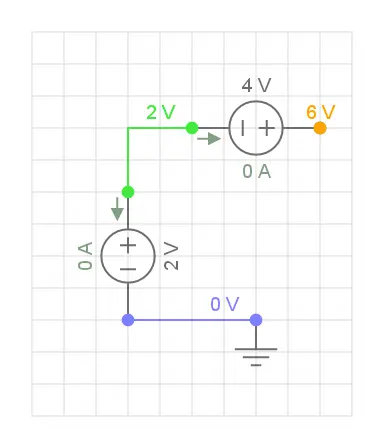Voltage, Ground, and Current
WHAT IS VOLTAGE AND POTENTIAL DIFFERENCE?#
Electrons have electric potential energy. An electron located at the ground node has zero energy. Its energy changes as it travels between circuit nodes.
THE MEDIEVAL ARCHER HERE CREATES POTENTIAL ENERGY BY DRAWING HIS BOW [^GARB]:#

Voltage is the difference between the Potential above the ground, which might be thought of as height above ground for now. So, the difference between a + value of volts above ground (zero volts) is referred to as potential difference.
The ground provides a reference for all nodal voltages. In the case below, there is no path for a current to travel from a higher potential to ground; there is NO current flow.
A voltage source should be considered as an electronic component within the context of a schematic circuit diagram. This voltage source component maintains a specified voltage difference across its terminals, independent of the current passing though it. A one coulomb charge travelling (from "-" to "+") through a voltage source of five volts gains five joules (J) of energy. Voltage sources therefore can supply electric energy to a circuit, e.g., by "lifting" charges from the ground to a node with higher voltage. 2

FOOTNOTES#
-
The synthetic man pictured here is performing a Medieval Archery Act. Accordingly, he is garbed in the dress of the fictional projection of this time period and is proud of it. The Medieval period in England is usually classified as the time between the fall of the Roman Empire to the beginning of the Renaissance, roughly the years AD 410–1485. Archery is an ethos. It is definitely worth a shot. ↩
-
charge travelling from - to + is what we believe happens in reality. However as mentioned elsewhere, convention dictates that the current flows from + to - ↩